 A Pattern Language
A Pattern Language
"Patterns," the units of this language, are answers to design problems (How high should a window sill be? How many stories should a building have? How much space in a neighborhood should be devoted to grass and trees?). More than 250 of the patterns in this pattern language are given: each consists of a problem statement, a discussion of the problem with an illustration, and a solution. Many of the patterns are archetypal, so deeply rooted in the nature of things that it seemly likely that they will be a part of human nature, and human action, as much in five hundred years as they are today.
 A Scientific Autobiography
A Scientific Autobiography
Drawn from notebooks Rossi kept beginning in 1971, these ruminations and reflections range from his obsession with theater to his concept of architecture as ritual. The book has been out of print for many years. This newly issued paperback reprint includes illustrations - photographs, evocative images, and a set of drawings of Rossi's major architectural projects prepared particularly for this publication - selected by the author himself to augment the text.
 Anchoring: Selected projects, 1975-1988
Anchoring: Selected projects, 1975-1988
An autobiographical compilation of projects completed early in Steven Holl's career, with narratives and drawings that reveal underlying theoretical premises and ideas. In the words of the architect, "In the first book of our projects we emphasized 'Anchoring'the deliberate development of each architectural project from its particular site and program."
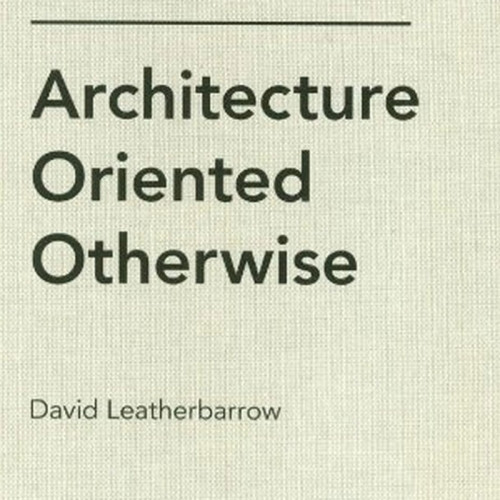 Architecture Oriented Otherwise
Architecture Oriented Otherwise
"My aim in this book is to explain the ways that buildings sometimes allow themselves to be seen independently, as images, and other times recede from prominence in order to accommodate everyday life... My hope is that this preamble will provide some clarification of the ways that a building can both adhere to and distinguish itself from its "context" and "program," performing in ways that acknowledge existing conditions while enriching them." -- David Leatherbarrow
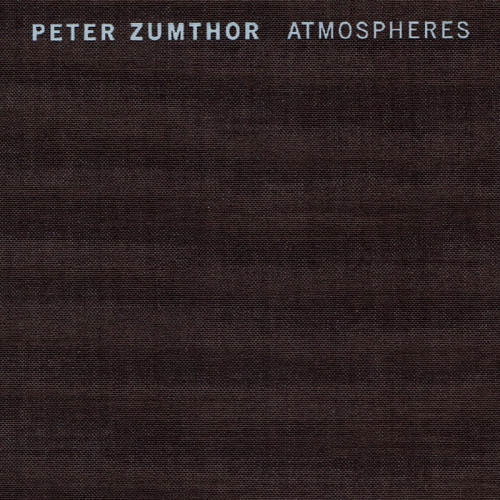 Atmospheres
Atmospheres
This is a minimal lecture on our being in our immediate environments. Zumthor literally speaks to you, and you get an excellent look into his mind, how he experiences a place, his opinions on the important of how a place feels, sounds, looks, and so on, and his humor as he delivers the lecture as well. Definitely a must for any student of architecture or life.
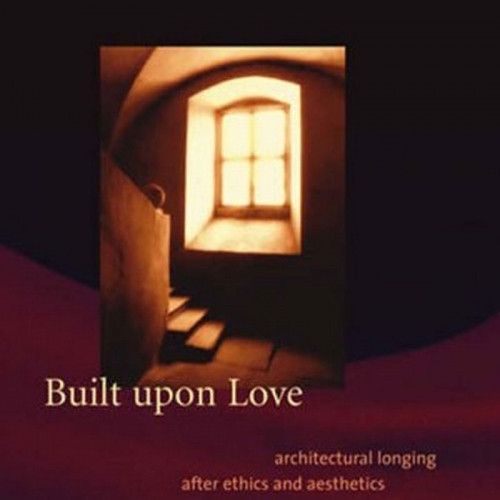 Built Upon Love
Built Upon Love
The forced polarity between form and function in considerations of architecture--opposing art to social interests, ethics to poetic expression--obscures the deep connections between ethical and poetical values in architectural tradition. Architecture has been, and must continue to be, writes Pérez-Gómez, built upon love. True architecture is concerned with far more than fashionable form, affordable homes, and sustainable development; it responds to a desire for an eloquent place to dwell - one that lovingly provides a sense of order resonant with our dreams.
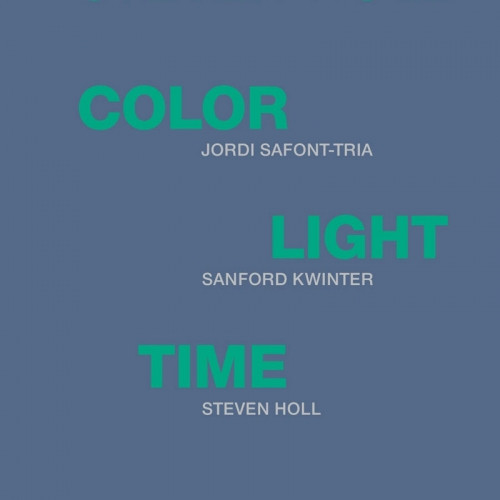 Color Light Time
Color Light Time
The work of Steven Holl - an outstanding representative of contemporary American architecture - is the subject of a detailed examination that is orientated by a focus on archetypical aspects of visual perception. Holl has developed his architectural stance and his reflections on architecture with striking consistency. The success of his work can be attributed to its sculptural shaping, his interest in the poetics of space, color, light, and material, and his fascination with scientific phenomena.
 Complexity & Contradiction in Architecture
Complexity & Contradiction in Architecture
First published in 1966, and since translated into 16 languages, this remarkable book has become an essential document in architectural literature. As Venturi's ""gentle manifesto for a nonstraightforward architecture,"" Complexity and Contradiction in Architecture expresses in compelling and original terms the rebellion against the purism of modernism. Three hundred and fifty architectural photographs serve as historical comparisons and illuminate the author's ideas on creating and experiencing architecture.
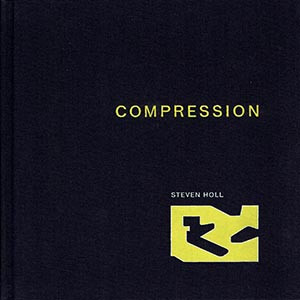 Compression
Compression
A collection of thirty-five major projects from the past decade. Holl applies concepts from neuroscience, literature, social science, and philosophy to develop the idea of compression: the condensation of material and social forces to create meaningful and sustainable architecture. All demonstrate his poetic attention to light, space, and water; a subtle and tactile employment of material and color; and an awareness of architecture's potential to connect people through inspiring public spaces.
 De-Architecture
De-Architecture
De-Architecture is a book of theory, opinion, and critical history on the subjects of architecture, art (public and private), and community spaces. While it is an outgrowth of the architectural group SITE, it is primarily an overview of the problems of communication in the building arts of this century and a series or proposed solutions. James Wines demonstrates that architecture must draw on sources that are relevant to today's disordered, pluralistic society.
 Deconstructing the Kimbell
Deconstructing the Kimbell
A clear-sighted look at the impact of Derrida and the deconstructionists on contemporary architecture. "A terrific piece. It is a pleasure to read, very perceptive, lucid, and well argued."--Kenneth Frampton
 Design for Innovative Technology: From Disruption to Acceptance
Design for Innovative Technology: From Disruption to Acceptance
Despite their often remarkable performance, new and ‘disruptive’ technologies often meet with resistance from the general public. Design – sometimes assumed to play a purely aesthetic role – is central in making revolutionary technology acceptable to society. Mastering design allows technological breakthroughs to transcend the innovation stage and to enter daily life.
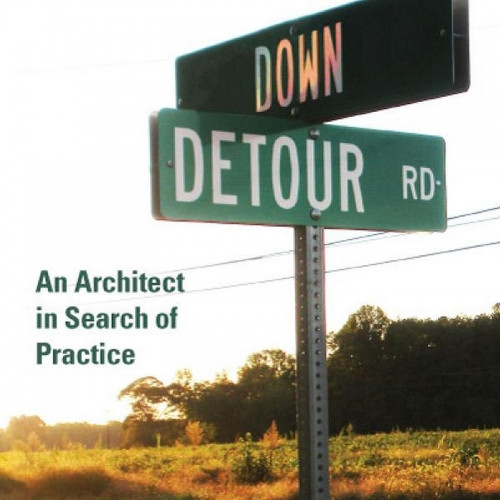 Down Detour Road
Down Detour Road
Architects may assure each other of their own importance, but society has come to view architecture as a luxury it can do without. For Cesal, this recognition becomes an occasion to rethink architecture and its value from the very core. He argues that the times demand a new architecture, an empowered architecture that is useful and relevant. New architectural values emerge as our cultural values shift: from high risks to safe bets, from strong portfolios to strong communities, and from clean lines to clean energy.
 Fire and Memory: Architecture and Energy
Fire and Memory: Architecture and Energy
Fernández-Galiano reconstructs the movement from cold to warm architecture, from building fire to building a building with and for fire, through what he calls a "metaphorical plundering" of disciplines as diverse as anthropology and economics, and in particular of ecology and thermodynamics. The author reintroduces energy to the discussion of architecture and reminds us that the sense of touch is as necessary to an understanding of the environment as the sense of sight.
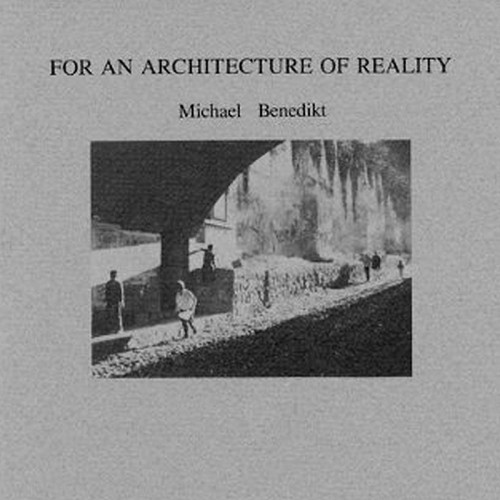 For an Architecture of Reality
For an Architecture of Reality
"Benedikt has written a bold theoretical essay, with stirring cultural implications, that argues to restore the missing sense of reality to architecture and insists on ‘the direct esthetic experience of the real.’ . . . a timely manifesto. Thought-provoking and eminently quotable, it succeeds admirably in what it sets out to do: to recall architecture, and not only architecture, to those all but mute meanings so often passed over and yet inseparable from our everyday existence.—Karsten Harries
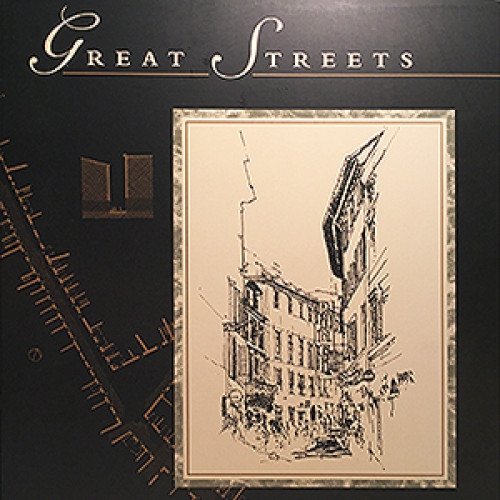 Great Streets
Great Streets
Which are the world's best streets, and what are the physical, designable characteristics that make them great? Jacobs studied a wide array of street types and urban spaces around the world. With more than 200 illustrations, all prepared by the author, along with analysis and statistics, Great Streets offers a wealth of information on street dimensions, plans, sections, and patterns of use, all systematically compared. It also reveals Jacobs's eye for the telling human and social details that bring streets and communities to life.
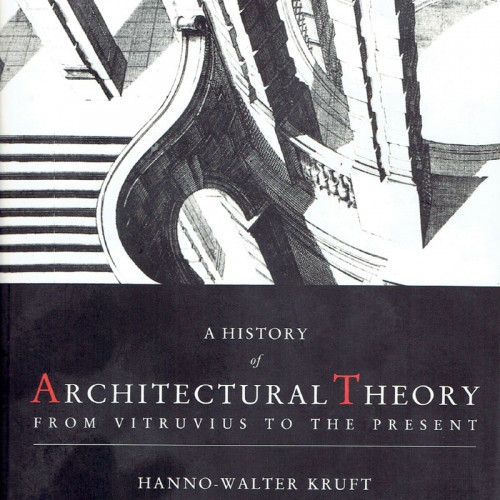 History of Architectural Theory
History of Architectural Theory
As the first comprehensive encyclopedic survey of Western architectural theory from Vitruvius to the present, this book is an essential resource for architects, students, teachers, historians, and theorists. Using only original sources, Kruft has undertaken the monumental task of researching, organizing, and analyzing the significant statements put forth by architectural theorists over the last two thousand years. The result is a text that is authoritative and complete, easy to read without being reductive.
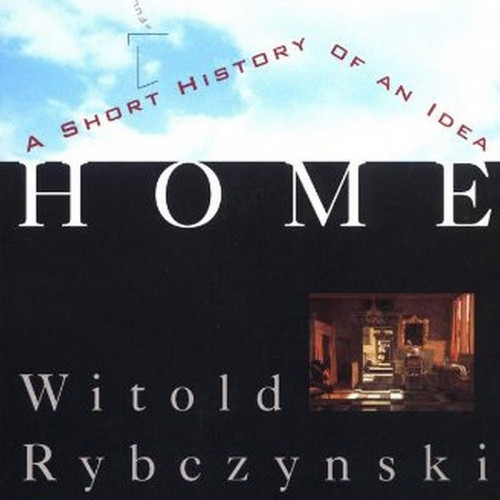 Home: A Short History of an Idea
Home: A Short History of an Idea
Rybczynski traces five centuries of homes both great and small, from the Middle Ages to today. He explains how social and cultural changes influenced styles of decoration and furnishing, how some of our most welcome luxuries were born of architectural necessity, and much more. Home opens a rare window into both the history of our private lives and how we really want to live.
 House: Black Swan Theory
House: Black Swan Theory
Rather than having an unvarying style, Holl aims at the sometimes elusive ideal of the specific. Each project tackles a different design challenge, using site as the physical and metaphysical foundation upon which to build. Fusing building and situation, Holl creates a unique expression in each home.
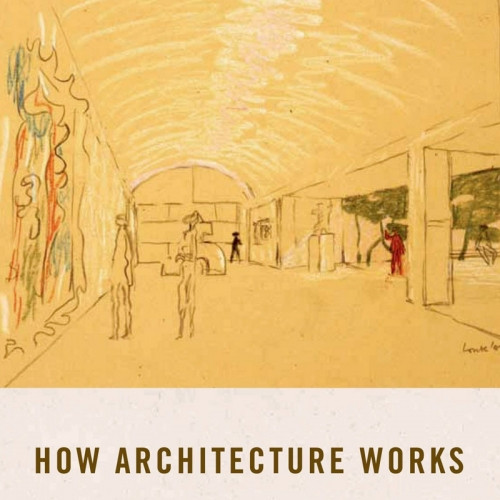 How Architecture Works: A Humanist’s Toolkit
How Architecture Works: A Humanist’s Toolkit
Here, Rybczynski answers fundamental questions about how good—and not so good—buildings are designed and constructed. Introducing the reader to the rich and varied world of modern architecture, he reveals how architects as diverse as Frank Gehry, Renzo Piano, and Robert A. M. Stern envision and create their designs.
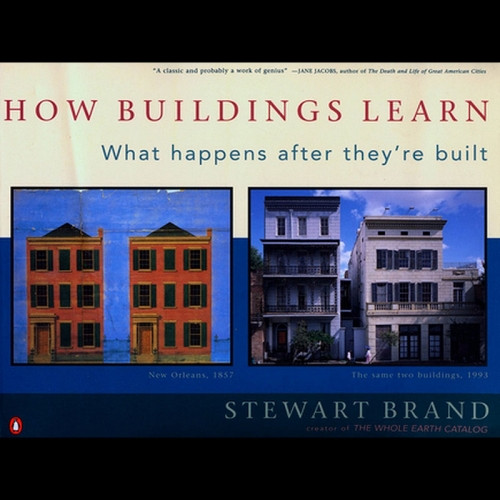 How Buildings Learn
How Buildings Learn
Buildings have often been studied whole in space, but never before have they been studied whole in time. How Buildings Learn is a new synthesis that proposes that buildings adapt best when constantly refined and reshaped by their occupants, and that architects can mature from being artists of space to becoming artists of time. More than any other human artifacts, buildings improve with time—if they're allowed to. How Buildings Learn shows how to work with time rather than against it.
 In Praise of Shadows
In Praise of Shadows
A delightful and insightful essay on aesthetics by the Japanese novelist, this book explores architecture, jade, food, and toilets, combining an acute sense of the use of space in buildings. The book includes descriptions of laquerware under candlelight and women in the darkness of the house of pleasure.
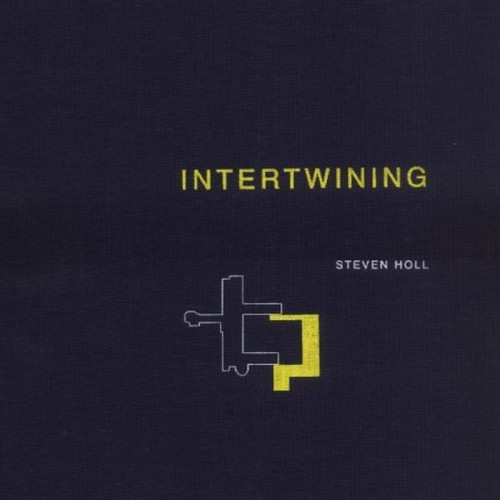 Intertwining
Intertwining
"In our second collection of works called Intertwining, the aim is to enlarge the argument for particular architecture that intertwines: idea, phenomena, and site. An individual idea drives the design for each project in a unique way of realizing a building and its site. The phenomenal experience of light, overlapping perspectives of space, material textures, or sound; the phenomenology of architecture is worth a reflection in advance of particular sites and ideas that are clarified in each project description." Steven Holl, Architect
 Jim Olson - Building | Nature | Art
Jim Olson - Building | Nature | Art
Over the course of a five decade career, Jim Olson has established a reputation for thoughtfully considered projects that suit and enhance their locations in Mexico, Southeast Asia, and the Pacific Northwest.
 John Pawson Themes and Projects
John Pawson Themes and Projects
This study examines spatial themes within Pawson's work. It examines how light, mass and structure inform the architecture, the role of ritual and order, and the blending of internal and external spaces. Six projects are featured, as well as eight essays by a range of different writers.
 Listening to Stone
Listening to Stone
Snow touches on such subjects as geology, philosophy, and community. We learn that stone's grace comes from its unique characteristics—its capacity to give, its surprising fluidity, its ability to demand respect, and its role as a steadying force in nature. In these fast-paced times, Snow’s life's work offers an antidote: the luxury of patience, the bounty and quietude of nature, the satisfaction of sweat. "I work with stone," he ultimately tells us, "because stone is so much work."
 Looking Around: A Journey Through Architecture
Looking Around: A Journey Through Architecture
Looking Around is about architecture as an art of compromise—between beauty and function, aspiration and engineering, builders and clients. It explores the notion of the architect as superstar and assesses giants from Palladio to Michael Graves, styles from classicism to high tech. It demonstrates how architecture actually works—or doesn't—in corporate headquarters, airports, private homes, and the special buildings designed to represent our civilization.
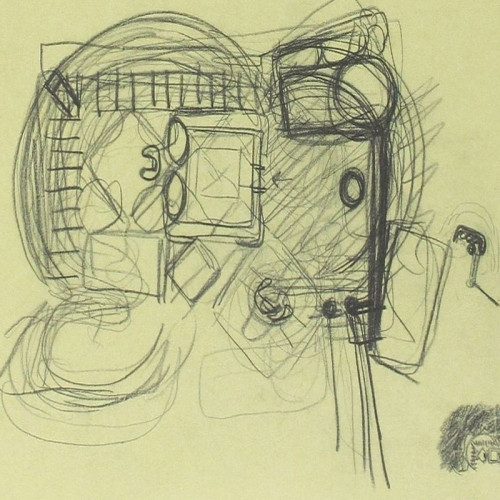 Louis Kahn Drawing to Find Out
Louis Kahn Drawing to Find Out
Kahn cultivated the craft of drawing as a means to architecture. His personal design drawings - seen either as a method of discovery or for themselves - are unique in the twentieth century. Over two hundred mostly unpublished drawings by Kahn and his associates are woven together with a lively and informed commentary into an intimate biography of an architectural idea.
 Louis Kahn On the Thoughtful Making of Spaces
Louis Kahn On the Thoughtful Making of Spaces
Kahn's move into his profession's spotlight coincided with the crisis of modern architecture, representing those aspects of space which modernism had so ambitiously rejected. Kahn's rethinking of modern architecture's paradigm of space belongs to his most important historical contributions. In tracing the genesis of the un-built project for the Dominican Motherhouse (1965-69), we are given a portrait of Kahn at work on fundamental questions of architectural space, considering sources of meaning in social and contextual dimensions.
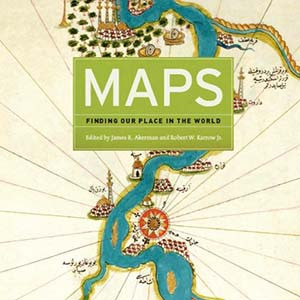 Maps: Finding Our Place in the World
Maps: Finding Our Place in the World
Architects draw maps all the time. We call them things like 'plans' or 'sections'. This exhaustive compilation of studies in cartography challenges us to stretch our conventional thinking about what constitutes a map and how many different ways we can understand graphically the environment in which we live.
 Minimum
Minimum
A unique book that presents a wide range of images embodying the idea of reduction to a minimum to achieve clarity and simplicity, an idea which has pervaded in the conception and design of objects and buildings for millennia. The book both embodies and presents a sequence of ideas that have influenced John Pawson and other artists in their search for simplicity.
 Nesting: Body Dwelling Mind
Nesting: Body Dwelling Mind
Increasingly, technology seems to be de-materializing our world. Yet our ideas and experiences - both physical and cultural - remain fundamentally patterned by the complex material interplay of brain, body, and world. With support from research in the cognitive and neurosciences, Robinson combines philosophy, poetry, and personal narrative to offer a study of how our built environment shapes us just as we have shaped it. She explores how our very being is sculpted by our interactions in an environment that we ourselves have fashioned, making us our own greatest artifact.
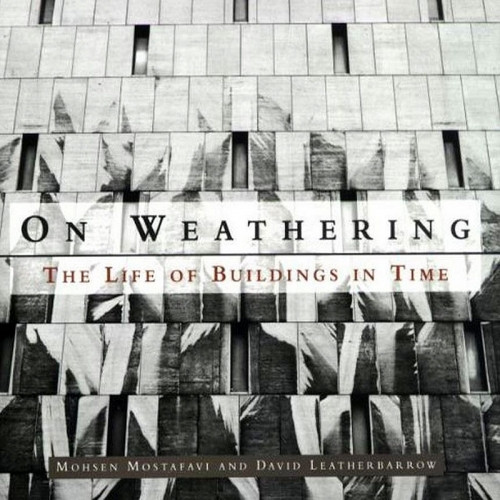 On Weathering
On Weathering
On Weathering illustrates the complex nature of an architectural project by taking into account its temporality, linking technical problems of maintenance and decay with a focused consideration of their philosophical and ethical implications. By recognizing the inherent uncertainty and inevitability of weathering and by viewing the concept of weathering as a continuation of the building process rather than as a forces antagonistic to it, the authors offer alternative readings of historical constructions and potential beginnings for architectural theory and practice.
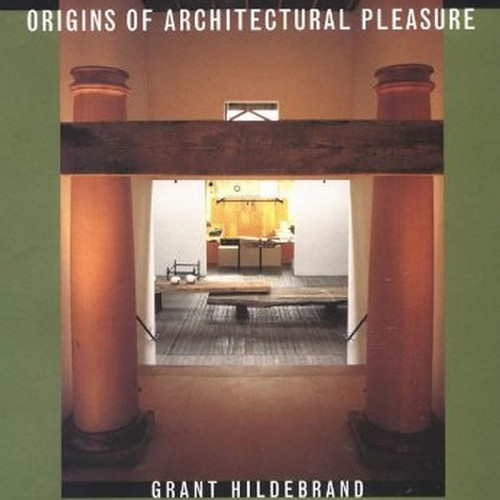 Origins of Architectural Pleasure
Origins of Architectural Pleasure
Speculating that nature has "designed" us to prefer certain conditions and experiences, Hildebrand is interested in how the characteristics of our most satisfying built environments mesh with Darwinian selection. Just what characteristics bestow evolutionary benefits? Refuge and prospect, enticement, peril, order and complexity, to name a few.
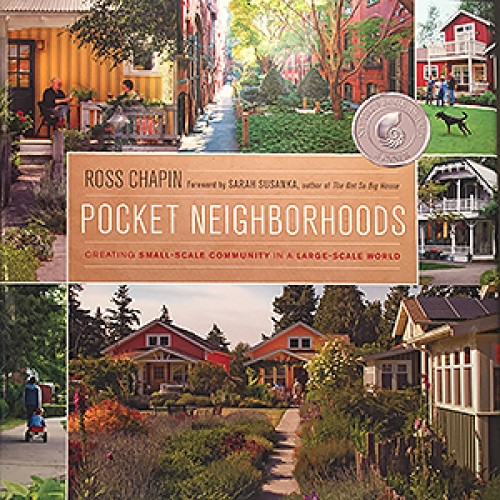 Pocket Neighborhoods
Pocket Neighborhoods
"Pocket Neighborhoods: Creating Small Scale Community in a Large Scale World" introduces small scale neighborhoods where people can easily know one another, where empty nesters and single householders with far-flung families can find friendship or a helping hand nearby, and where children can have shirt-tail aunties and uncles just beyond their front gate.
The book describes inspiring pocket neighborhoods through stories of the people who live there, as well as the progressive planners, innovative architects, pioneering developers, craftspeople and gardeners who helped create them.
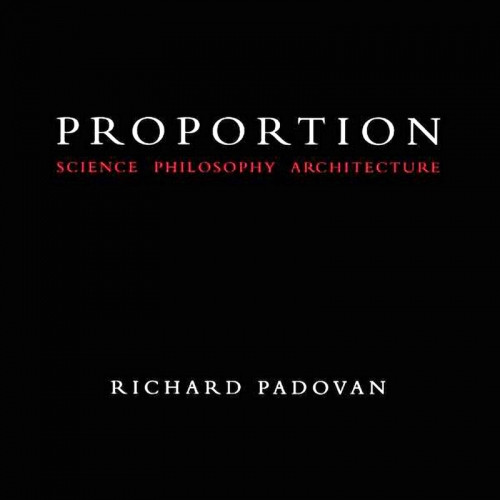 Proportion: Science, Philosophy, Architecture
Proportion: Science, Philosophy, Architecture
A well-illustrated and readable comparative guide to proportion systems in architecture, setting out the mathematical principles that underlie the main systems and illustrating these with examples of their use in historical and modern buildings. The main body of the text traces the interplay of abstraction and empathy through the history of science, philosophy and architecture from the early Greeks through to the two early twentieth-century architects who made proportion the focus of their work: Le Corbusier and Van der Laan.
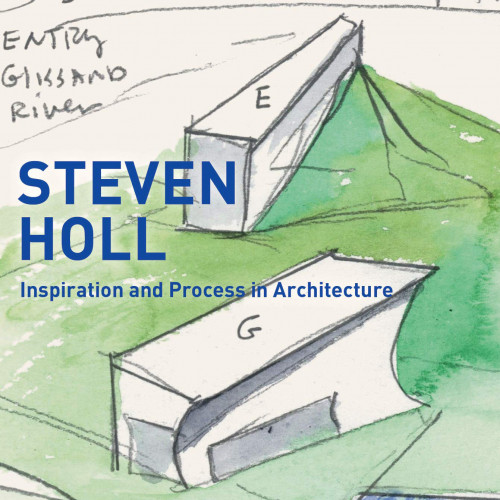 Steven Holl: Inspiration and Process in Architecture
Steven Holl: Inspiration and Process in Architecture
Steven Holl begins each design commission with a small watercolor, exploring light, color, and form with paint and paper. He is recognized for his ability to blend space and light with contextual sensitivity utilizing unique qualities of projects to create concept-driven design.
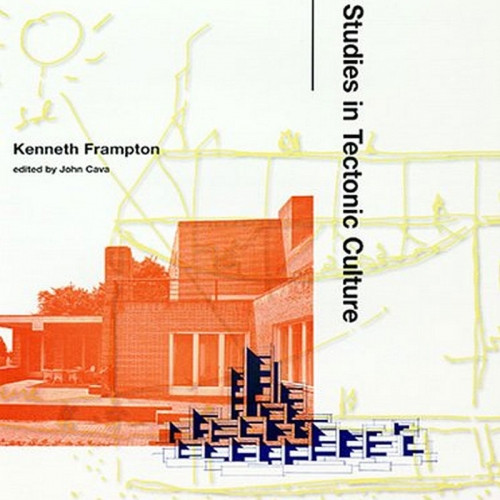 Studies in Tectonic Culture
Studies in Tectonic Culture
Studies in Tectonic Culture is nothing less than a rethinking of the entire modern architectural tradition. Frampton argues that modern architecture is invariably as much about structure and construction as it is about space and abstract form. He considers the conscious cultivation of the tectonic tradition in architecture as an essential element in the future development of architectural form, casting a critical new light on the entire issue of modernity and on the place of much work that has passed as "avant-garde".
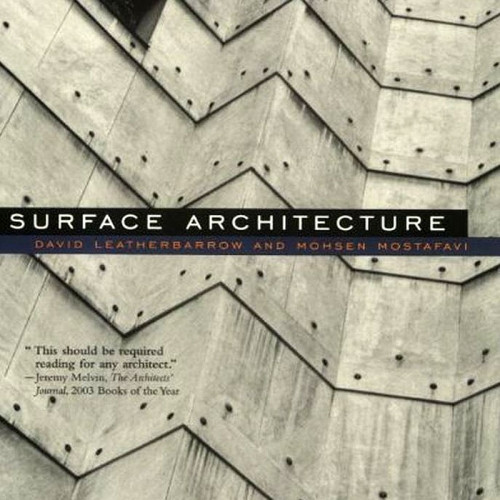 Surface Architecture
Surface Architecture
Visually, many contemporary buildings either reflect their systems of production or recollect earlier styles and motifs. This division between production and representation is in some ways an extension of that between modernity and tradition. Leatherbarrow and Mostafavi explore ways design can take advantage of production methods such that architecture is neither independent of nor dominated by technology.
 The Aesthetic Brain
The Aesthetic Brain
The Aesthetic Brain takes readers through the world of beauty, pleasure, and art. Using the latest advances in neuroscience and evolutionary psychology, Anjan Chatterjee investigates how an aesthetic sense is etched into our minds, and explains why artistic concerns feature centrally in our lives. Along the way, Chatterjee addresses such fundamental questions as: What is beauty? Is it universal? How is beauty related to pleasure? What is art? Should art be beautiful? Do we have an instinct for art?
 The Architect’s Brain: Neuroscience,Creativity, and Architecture
The Architect’s Brain: Neuroscience,Creativity, and Architecture
This book considers relationships between the neurosciences and architecture. Malgrave explores architectural thought over the last 500 years as a cognitive manifestation of philosophical,psychological, and physiological theory. He looks at architectural theory through the lens of neuroscience to demonstrate the neurological justification for timeless architectural ideas, from the multi-sensory nature of the architectural experience, to the essential relationship of ambiguity and metaphor, to creative thinking.
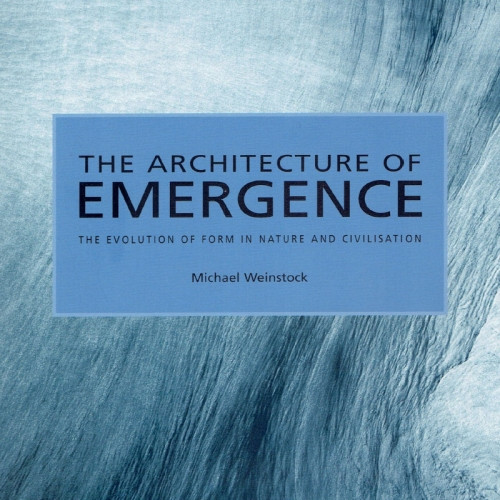 The Architecture of Emergence
The Architecture of Emergence
In the sciences, Emergence is an explanation of how natural systems have evolved and maintained themselves. This book explores a new model of 'Metabolism' that uses natural systems and processes as a model beyond the minimizing environmental strategies of 'sustainability'.
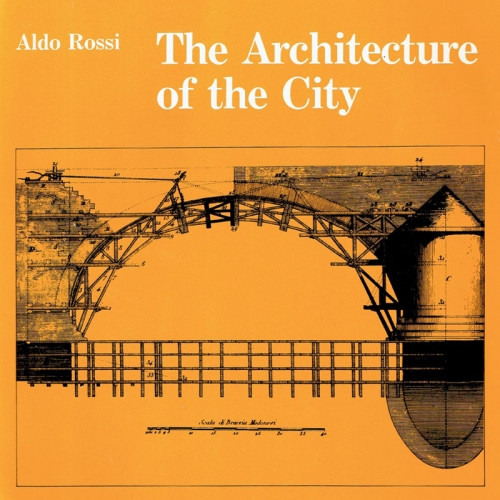 The Architecture of the City
The Architecture of the City
Aldo Rossi (1937-1997) was a practicing architect and leader of the Italian architectural movement La Tendenza, and one of the most influential theorists of his time. The Architecture of the City is his major work of architectural and urban theory. In part a protest against functionalism and the Modern Movement, in part an attempt to restore the craft of architecture to its position as the only valid object of architectural study, and in part an analysis of the rules and forms of the city's construction, the book remains immensely popular among architects and academics.
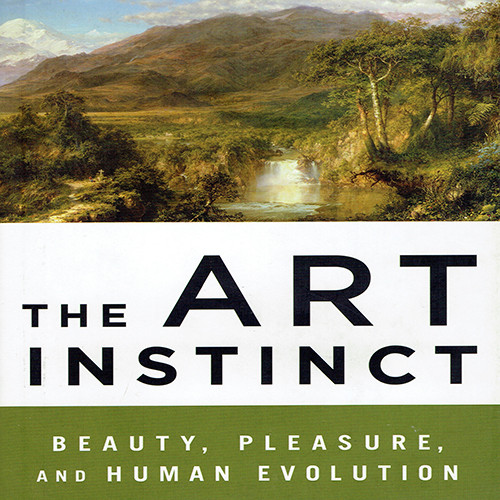 The Art Instinct
The Art Instinct
Human tastes in the arts, Dutton argues, are evolutionary traits. They are not, as the past century of art criticism and academic theory would have it, just "socially constructed." Our love of beauty is inborn, and many aesthetic tastes are shared across remote cultures. Dutton shows that we must premise art criticism on an understanding of evolution, not on abstract "theory." He restores the place of beauty, pleasure, and skill as artistic values.
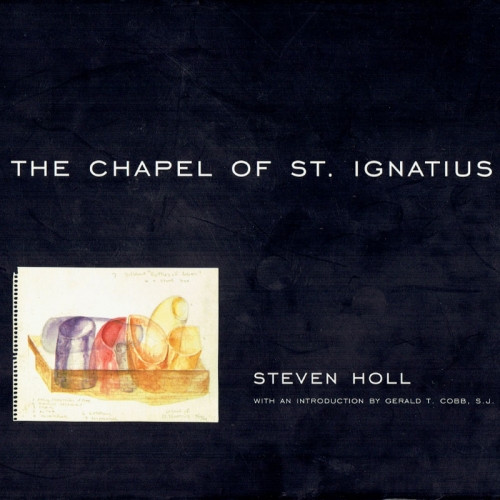 The Chapel of St. Ignatius
The Chapel of St. Ignatius
This jewel-like chapel, while small, contains the essence of Holl's vision - his interest in the phenomenology of space, his investigations of form and material, and his use of reflected light and color. From Holl's preparatory watercolor sketches, to design development and working drawing details, to construction shots showing the unique precast system, to a large photographic portfolio of the completed building, this book reveals Holl's working method as well as the finished building.
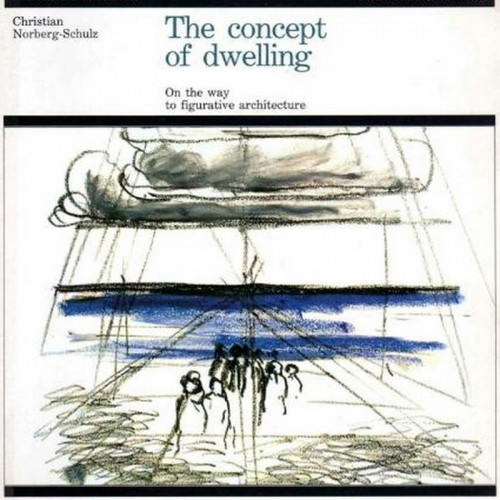 The Concept of Dwelling
The Concept of Dwelling
This exploration of the concept of dwelling and place - in contrast to the current emphasis on abstract space - offers a point of departure for a return to figurative architecture, opening avenues toward an architecture which may satisfy the need for dwelling in the existential sense of the word.
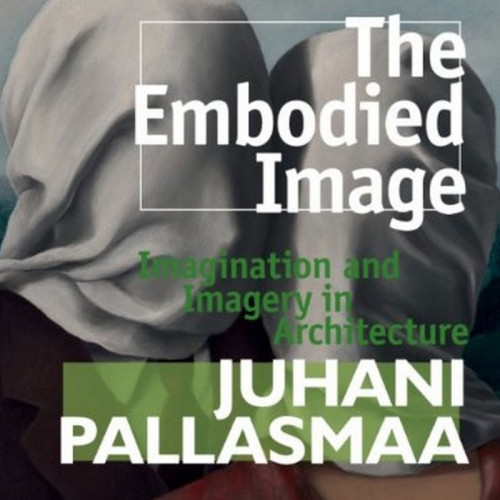 The Embodied Image
The Embodied Image
Architecture is usually analyzed and taught as a discipline that articulates space and geometry, but the mental impact of architecture arises significantly from its image. This book examines the image in culture; the nature of the image and imagination; and the specific characteristics of the artistic image, concluding with the architectural image. The Embodied Image is illustrated with more than 40 paired images, ranging from scientific images to historic artistic and architectural masterpieces, and contemporary architectural and artistic works.
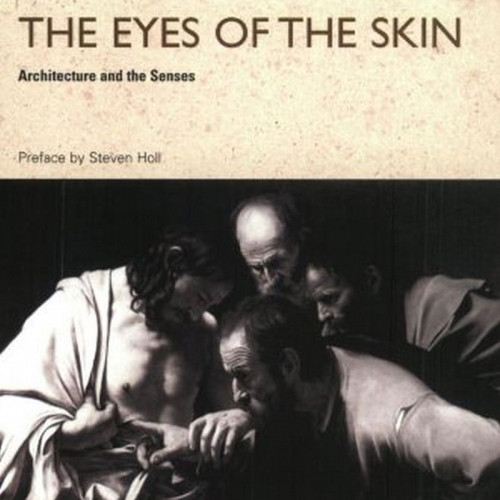 The Eyes of the Skin
The Eyes of the Skin
The Eyes of the Skin has become a classic of architectural theory and consists of two extended essays. The first surveys the historical development of the ocular-centric paradigm in western culture since the Greeks, and its impact on the experience of the world and the nature of architecture. The second examines the role of the other senses in authentic architectural experiences, and points the way towards a multi-sensory architecture which facilitates a sense of belonging and integration.
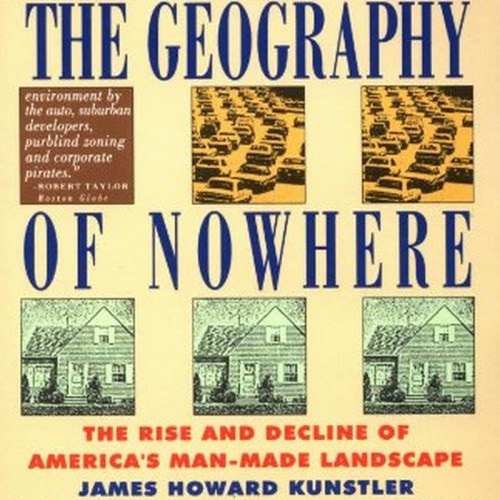 The Geography of Nowhere
The Geography of Nowhere
The Geography of Nowhere traces America's evolution from a nation of coherent communities to a land where every place is like no place in particular, where the cities are dead zones and the countryside is a wasteland of cartoon architecture and parking lots. Kunstler tallies up the huge economic, social, and spiritual costs that America is paying for its car-crazed lifestyle, calling for citizens to reinvent the places where we live and work, to build communities that are once again worthy of our affection.
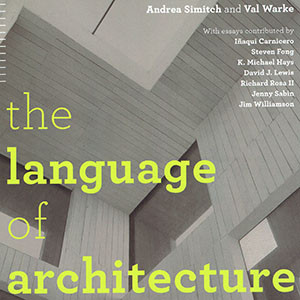 The Language of Architecture
The Language of Architecture
In order to master the foundation of architecture, one must master the basic building blocks of its language; the definitions, function, and usage. The Language of Architecture addresses the basic elements of architectural design, divided into twenty-six concise chapters. This visual reference includes an introduction to architecture design, historical view of the elements, as well as an overview of how these elements can and have been used across multiple design disciplines.
 The Logic of Architecture
The Logic of Architecture
The Logic of Architecture is the first comprehensive, systematic, and modern treatment of the logical foundations of design thinking. It provides a detailed discussion of languages of architectural form, their specification by means of formal grammars, their interpretation, and their role in structuring design thinking. The Logic of Architecture reexamines central issues of design theory in the light of recent advances in artificial intelligence, cognitive science, and the theory of computation.
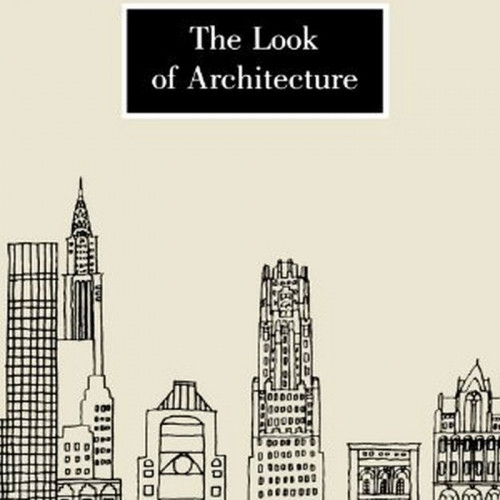 The Look of Architecture
The Look of Architecture
Style is the language of architecture, Rybczynski writes, and fashion represents the wide and swirling cultural currents that shape and direct that language. The two - style and fashion - are intimately linked; indeed, architecture cannot escape fashion. Style is one of the enduring and endearing aspects of architecture, Rybczynski concludes. Furthermore, an architecture that recognizes the importance of style would not be as introspective and self-referential as are so many contemporary buildings. It would be part of the world: Not architecture for architects, but for everyone.
 The Mathematics of the Ideal Villa and Other Essays
The Mathematics of the Ideal Villa and Other Essays
Rowe is known for an original approach to thinking about architectural history based on drawing comparisons between cultural events that conventional history kept widely separated and categorized, but which he places together for comparison. This book of his essays takes the title from the first one in the book, which is an analysis of the geometrical and proportional similarities between Le Corbusier's villa at Garches and Palladio's Villa Malcontenta.
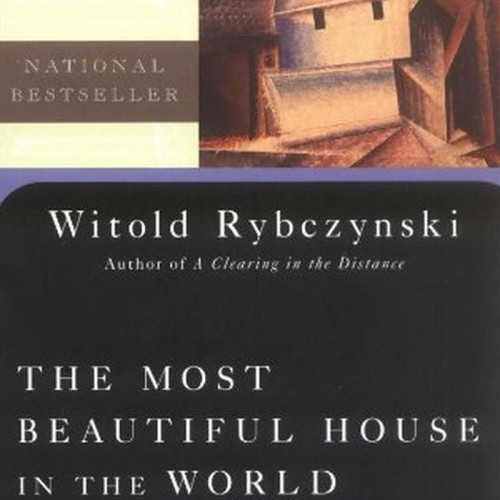 The Most Beautiful House in the World
The Most Beautiful House in the World
What architects do, how they get it right, what an architectural genius can see, and what distinguishes architecture from other arts.
 The Nature of Order Books 1-4
The Nature of Order Books 1-4
BOOK ONE argues living structures depend on features which connect with the human self, and that only living structure has the capacity to support human well-being. BOOK TWO considers three perspectives: a scientific perspective; a perspective based on beauty and grace; a commonsense perspective based on intuitions and everyday life. BOOK THREE presents projects consistent with the theory of living process. BOOK FOUR presents a new cosmology of our experience of self as the link uniting each individual with the whole, connecting consciousness and matter.
 The Poetics of Space
The Poetics of Space
Thirty years since its first publication in English, French philosopher Gaston Bachelard's The Poetics of Space one of the most appealing and lyrical explorations of home. Bachelard takes us on a journey, from cellar to attic, to show how our perceptions of houses and other shelters shape our thoughts, memories, and dreams.
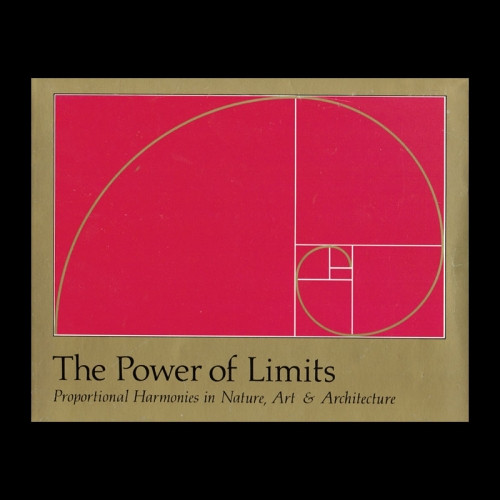 The Power of Limits
The Power of Limits
Patterns are revealed in how things grow and are made, as demonstrated by the spirals which move in opposite directions in the growth of a plant. The joining of unity and diversity in the discipline of proportional limitations creates forms that are beautiful to us because they embody the principles of the cosmic order of which we are a part; conversely, the limitlessness of that order is revealed by the strictness of its forms.
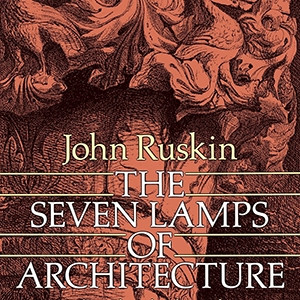 The Seven Lamps of Architecture
The Seven Lamps of Architecture
John Ruskin (1819 – 1900) was the leading English art critic of the Victorian era, also an art patron, draughtsman, watercolourist, prominent social thinker and philanthropist. He wrote on subjects ranging from geology to architecture, myth to ornithology, literature to education, and botany to political economy. This classic work expresses his deepest convictions about the nature and role of architecture and its aesthetics.
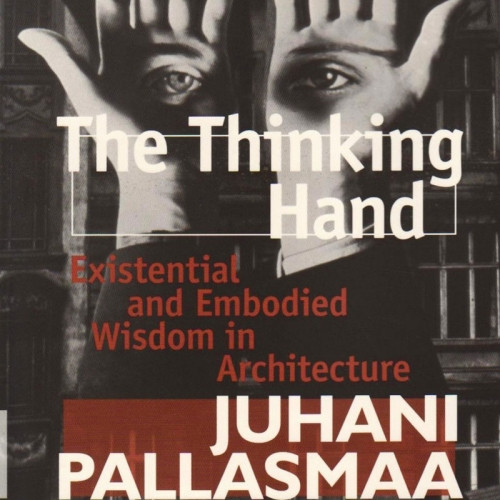 The Thinking Hand
The Thinking Hand
The book title is a metaphor for the characteristic independence and autonomous activity of all our senses as they constantly scan the physical world. Many of our most crucial skills are internalized as automatic reactions that we are not consciously aware of. Prevailing educational philosophies continue to emphasize conceptual, intellectual and verbal knowledge over this tacit and non-conceptual wisdom of our embodied processes, which is so essential to our experience and understanding of the physical and the built.
 The Uninhabitable Earth - Life After Warming
The Uninhabitable Earth - Life After Warming
It is worse, much worse, than you think. If your anxiety about global warming is dominated by fears of sea-level rise, you are barely scratching the surface. Without a revolution in how billions of humans conduct their lives, parts of the Earth could become close to uninhabitable, and other parts horrifically inhospitable, as soon as the end of this century. The Uninhabitable Earth is an impassioned call to action. For just as the world was brought to the brink of catastrophe within the span of a lifetime, the responsibility to avoid it now belongs to a single generation.
 Thermal Delight in Architecture
Thermal Delight in Architecture
Our thermal environment is as rich in cultural associations as our visual, acoustic, olfactory, and tactile environments. This book explores the potential for using thermal qualities as an expressive element in building design. Until quite recently, building technology and design has favored high-energy-consuming mechanical methods of neutralizing the thermal environment. Not only is thermal symbolism now obsolete but the modern emphasis on central heating systems and air conditioning and hermetically sealed buildings has undermined our thermal coping and sensing mechanisms.
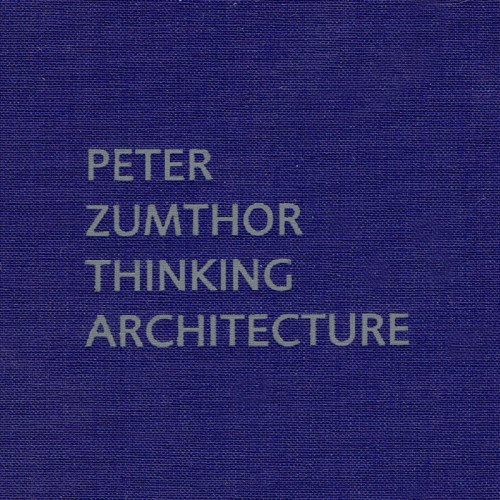 Thinking Architecture
Thinking Architecture
In order to design a building with a sensuous connection to life, one must think in a way that goes far beyond form and construction. In these essays Peter Zumthor expresses his motivation in designing buildings, which speak to our emotions and understanding in so many ways, and possess a powerful and unmistakable presence and personality.
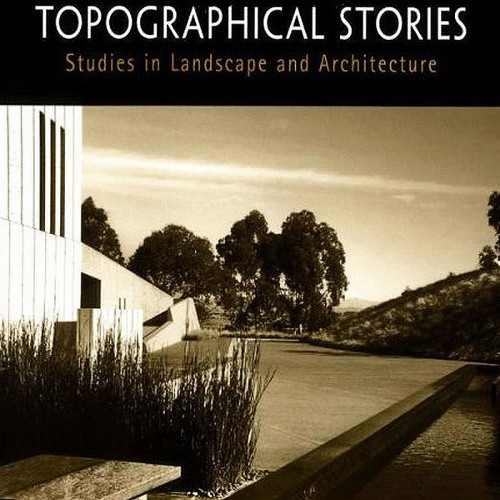 Topographical Stories
Topographical Stories
Leatherbarrow offers a new way of thinking of architecture and landscape architecture, showing how the two disciplines rely upon one another to form a single framework of cultural meaning. He redefines landscape architecture and architecture as topographical arts, the shared task of which is to accommodate and express the patterns of our lives. Topography, in his view, incorporates terrain, built and unbuilt, but also traces of practical affairs, by means of which culture preserves and renews its situations and institutions.
 Towards a New Architecture
Towards a New Architecture
Published in 1923, Toward an Architecture had an immediate impact on architects throughout Europe and remains a foundational text for students and professionals. Le Corbusier urges readers to cease thinking of architecture as a matter of historical styles and instead open their eyes to the modern world. Simultaneously a historian, critic, and prophet, he provocatively juxtaposes views of classical Greece and Renaissance Rome with images of airplanes, cars, and ocean liners. Le Corbusier’s slogans—such as “the house is a machine for living in”—and philosophy changed how his contemporaries saw the relationship between architecture, technology, and history.
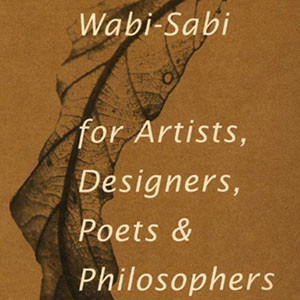 Wabi-Sabi for Artists, Designers, Poets & Philosophers
Wabi-Sabi for Artists, Designers, Poets & Philosophers
This is a wonderfully crafted book for those who have never heard the term Wabi-Sabi. The pictures not only strengthen the points the author makes but also illustrate what he can't put into words. Wabi-Sabi is an aesthetic that mostly lives in the ditches, basements, and out-of-the-way places of modern society. This book gives the license and some philosophical tools to explore the simple life as a thing of beauty contrary to the glittering clutter often thrown at us in every aspect of our lives.
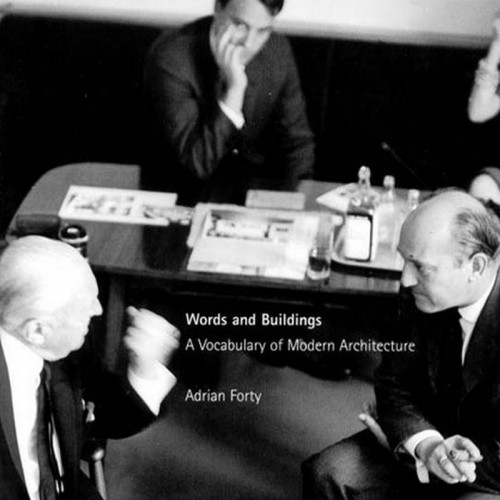 Words and Buildings
Words and Buildings
The first section of the book consists of essays that investigate the language of modernism: language and drawing, "masculine and feminine" architecture, language metaphors, science in architecture, and the social properties of architecture. The second part provides a vocabulary and analysis of key words such as Character, Form, History, and Space. Each investigation explores the term's historical and current use and treatment by architects, historians, philosophers, critics, and the people who actually use buildings.